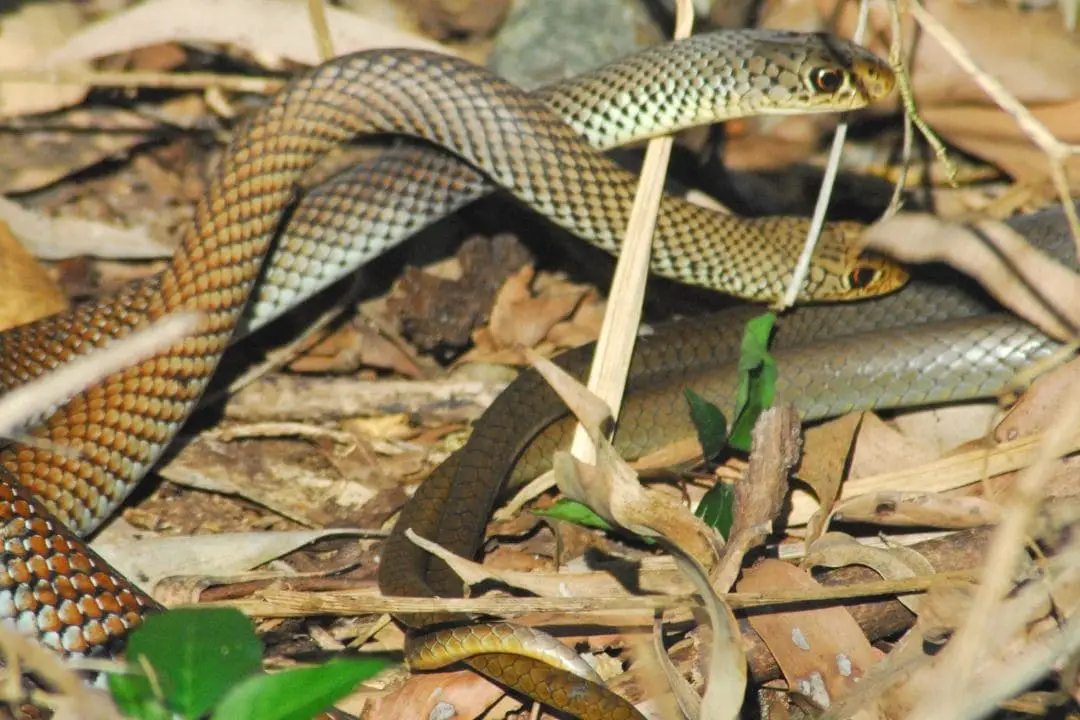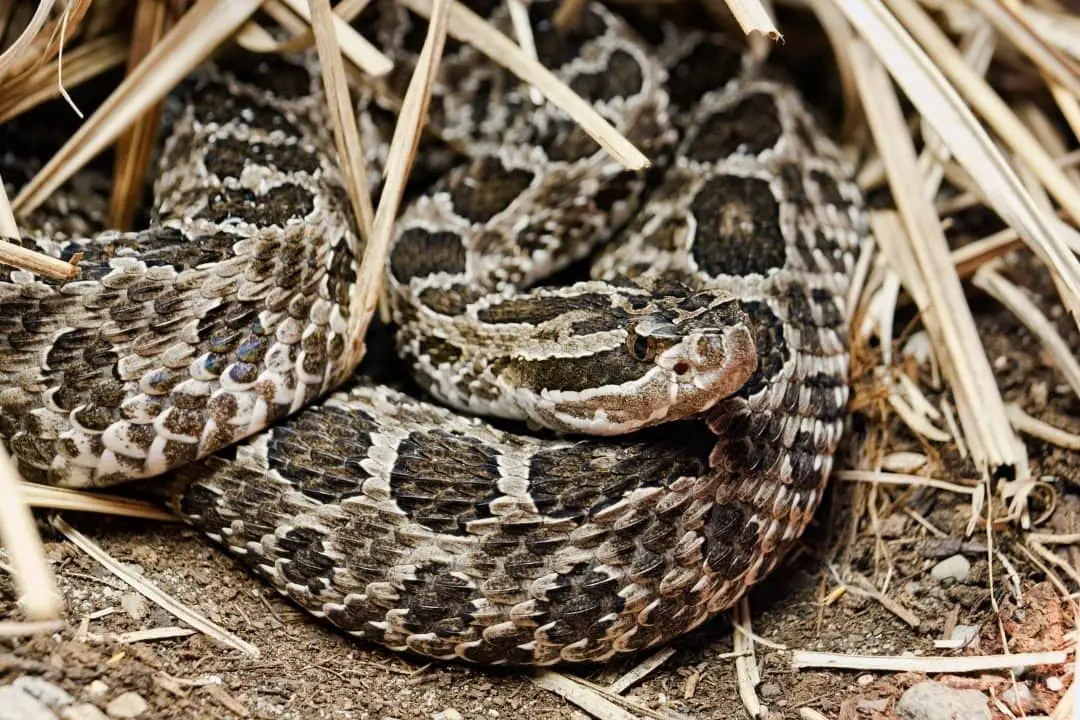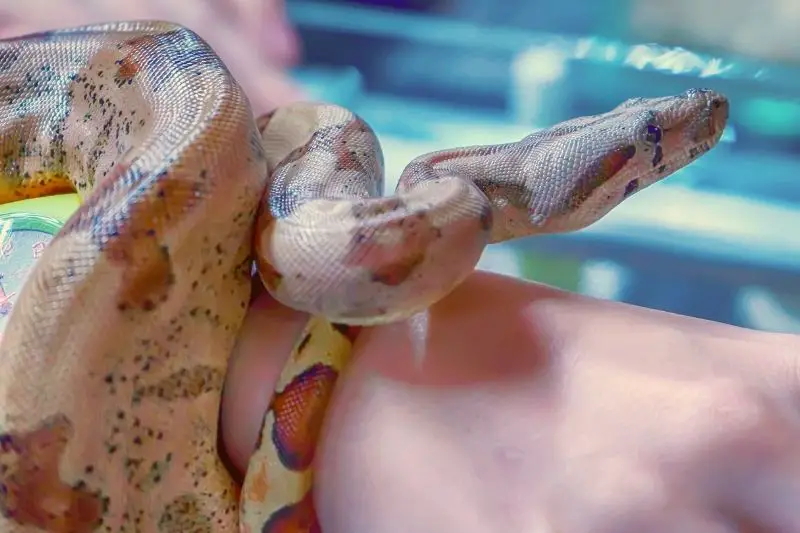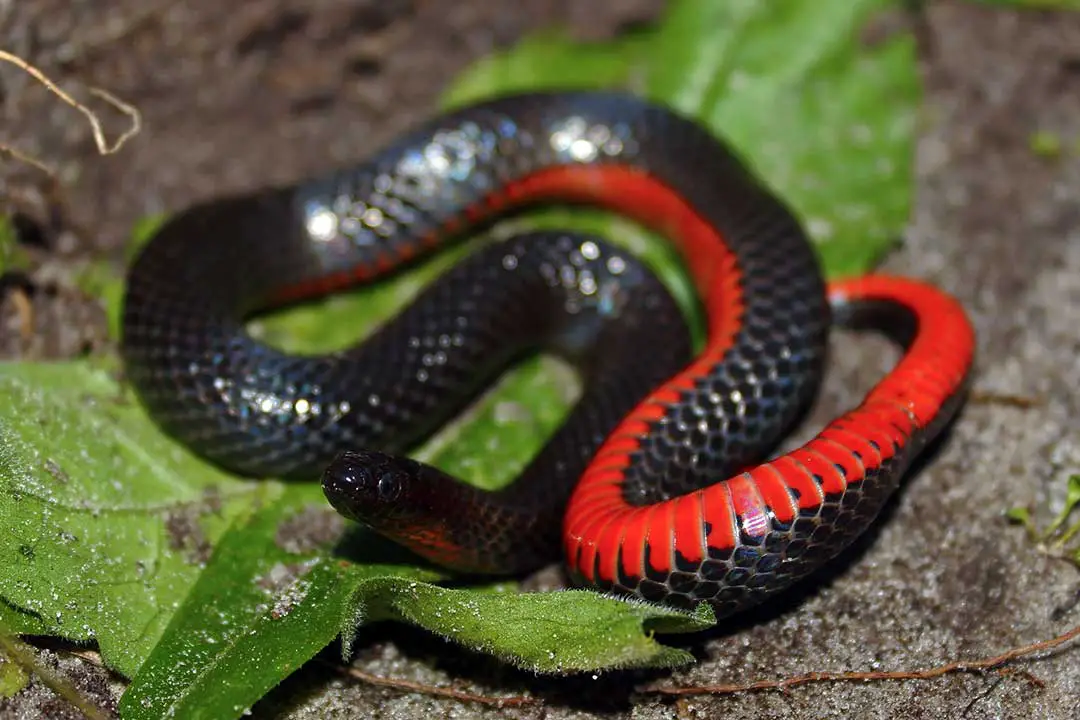Reproduction is incredibly important for the survival of a species. Every species has its own methods of reproduction. Animals that have sexual reproduction have unique methods of finding and attracting mates.
Many birds are famous for their mating dances. Some animals like bighorn sheep fight for mates. Snakes also have their own unique mating behaviors.
So how do snakes mate?
Snakes find mates with a strong sense of smell. The males then court the female snake by slithering over her and trying to align their tails. Once they start mating, snakes can stay locked together for up to a day.
Timing
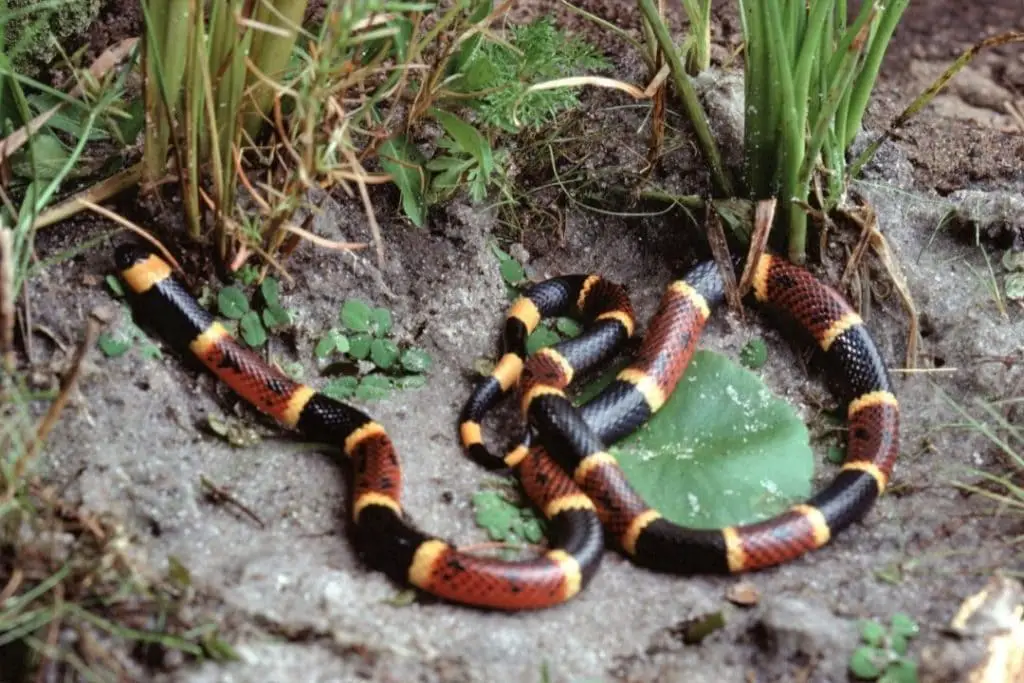
All snake species have a specific time of the year that they mate. Snakes that live in areas with a winter will typically spend the cold months brumating. After brumation is over in the spring, the snakes are typically ready to mate.
Some species like garter snakes den together and mate once the weather warms enough to be active. Others either don’t brumate or spend their brumation alone.
In these cases, female snakes will produce pheromones. These signal to males that she is ready to mate.
The exact timing will depend on the species and location. Some snakes time breeding with prey availability. Some island populations rely on migratory bird nests for food.
This means they time their reproduction to match when food is available. They may also time it when there is plenty of small prey for their young.
Some animals may also reproduce multiple times a year in tropical climates.
Locating a Mate
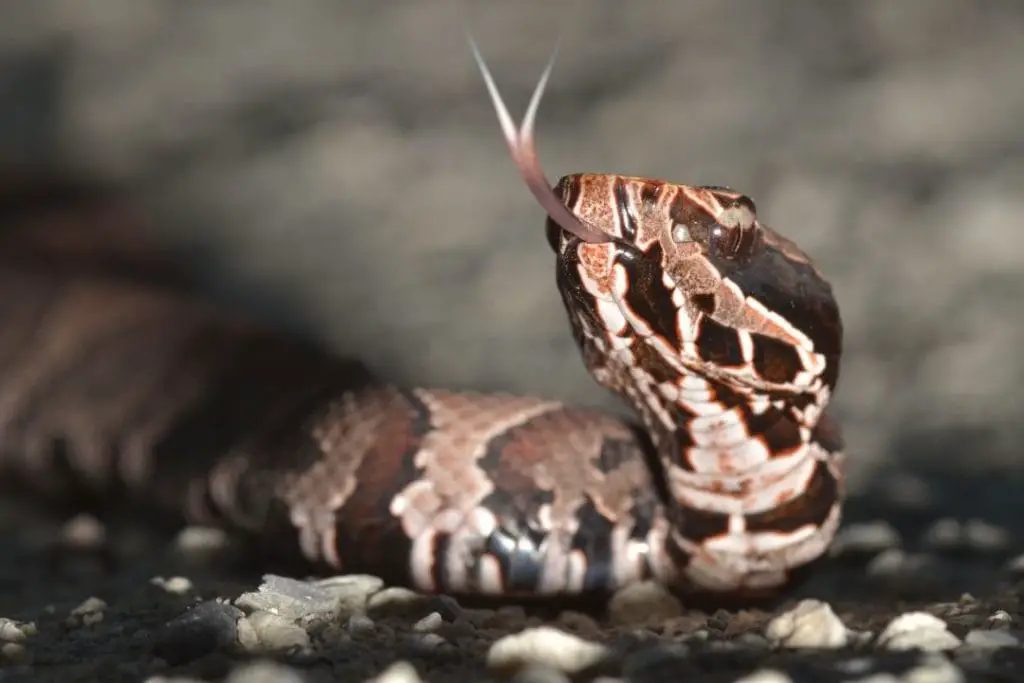
The vast majority of snake species are solitary. They only spend time with other members of their same species when it is time to mate.
Since many snakes live in distinct territories for most of the year, this can mean that males may need to travel a great distance and scour a wide area to find a mate.
Snakes have a strong sense of smell that helps them locate other snakes. They have an organ known as the vomeronasal organ (also known as jacobson’s organ) that allows the snake to smell the pheromones.
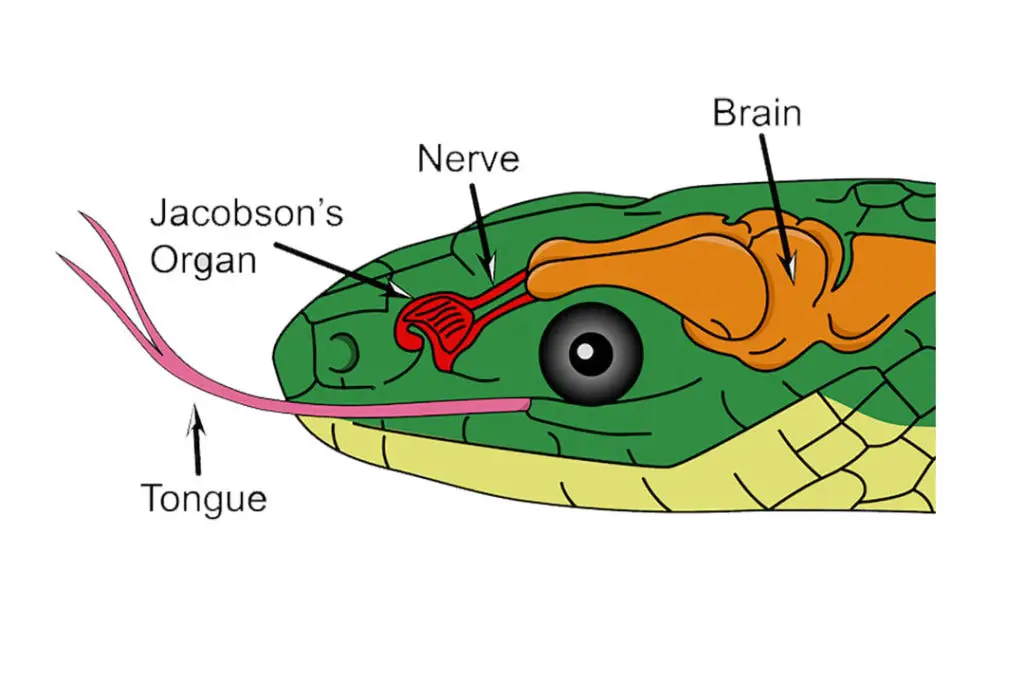
Snakes have a forked tongue that they use to pick up scent molecules. These are brought to the vomeronasal organs in the mouth.
The two tips of the tongue can catch the scent in two directions. The snake then uses any difference in the strength of the scent to locate a mate. They smell in stereo!
Males typically can travel large distances when looking for a mate. Most males will also mate with as many females as they can locate.
Females produce pheromones to attract male snakes and tend to be willing to mate multiple males, but this can vary depending on the species. Some species of snake form a plug after mating.
This prevents the female from mating with other males. This means that any young produced will likely belong to the first male.
Female snakes can frequently store sperm as well. This means that a female can reproduce even if she did not find a mate that year.
Most male snakes will reproduce every year if they can. Females tend to only breed if the animal is in good condition. This means some species may only reproduce every other year.
Courtship
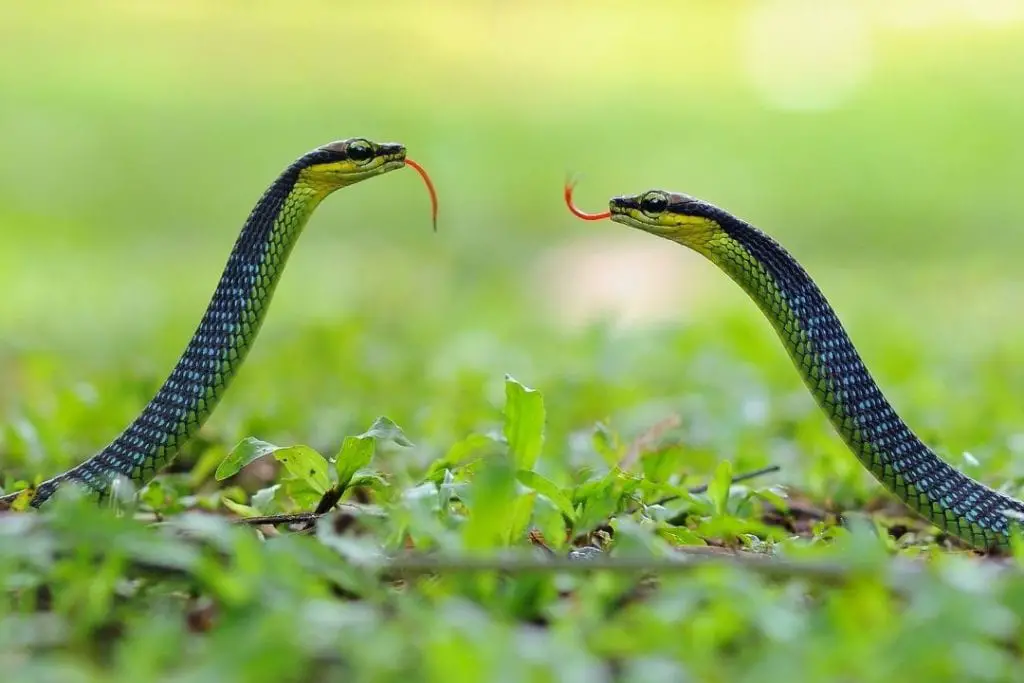
The exact details of courtship depend on the species. Some species start off with competition between any males over which gets to mate with the female.
Some species of venomous snakes like the rattlesnake have been recorded as fighting over mates. Garter snakes form mating balls where the males all compete to be the one to mate with the female.
Other species may not care about any other males in the area. Males that are competing may simply size each other up and then engage in combat if neither will back down.
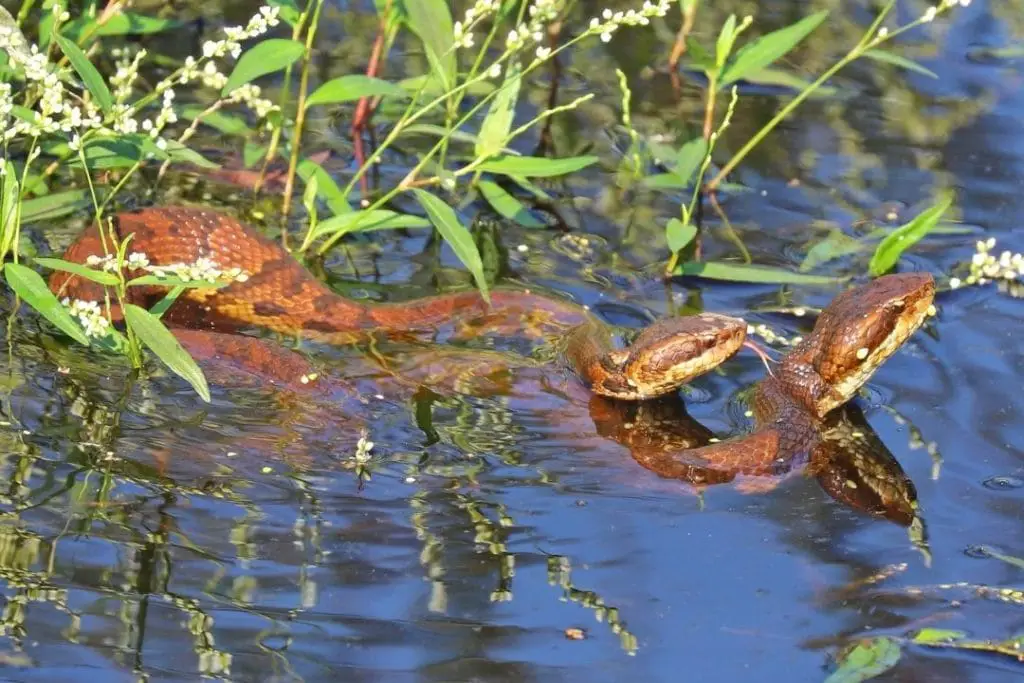
The males will try to push down the head of their rival. The snake that is forced down will leave to find a different mate.
Once any competitors are handled, the male normally tries to court the female.
This can vary as well. A common strategy seen in many snakes involves the male rubbing his chin on the female. Others will use a specific type of tongue flick or vibrate to entice the female.
Pythons and boas retain small vestigial limbs near the cloaca called spurs. Males typically have larger spurs than females. The male may use the spurs to try to stimulate the female and convince her to allow him to mate. He will try to align them and get his tail under hers.
A female that isn’t ready to mate will normally flee or chase off any males. If she is, she will lift her tail, open her cloaca and allow the male to mate.
Anatomy
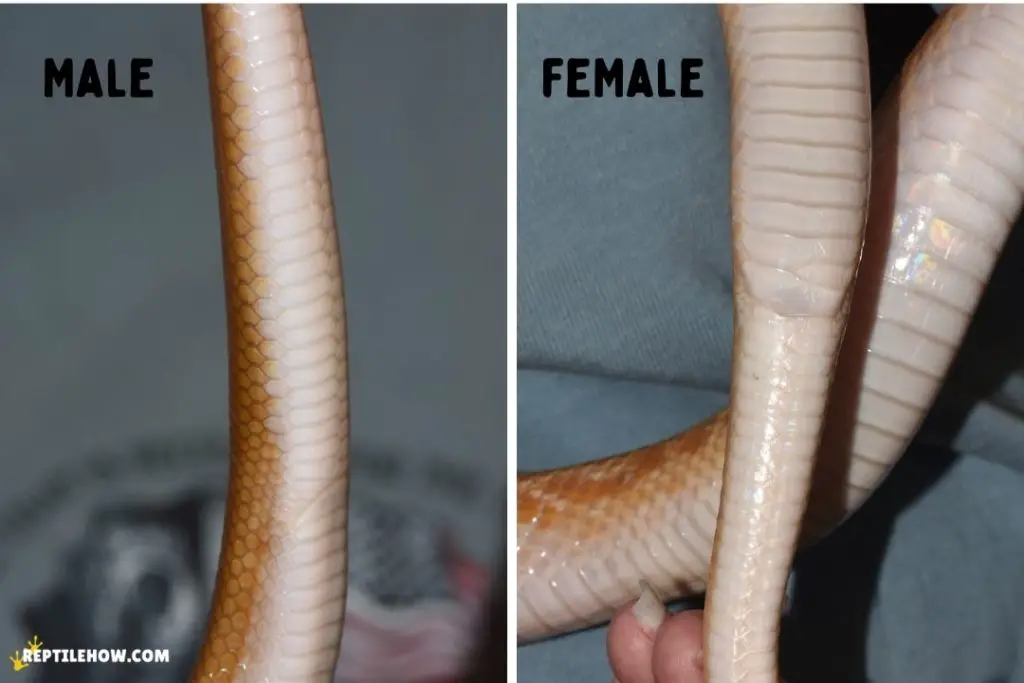
Snakes are much like other reptiles when it comes to their reproductive anatomy. Females have a cloaca.
This is a single orifice that gives access to her reproductive tract. It is also where waste like feces and urine are produced. Males also have this single opening. The difference is that the male has his reproductive organs stored inside the cloaca.
Males have two copulatory organs known as hemipenes:

Each of these organs is connected to a separate testicle.
The male uses his tail to align his cloaca with the female’s. Once he is in position, he inserts one of the hemipenes in the female’s cloaca to begin mating.
Males will only use one hemipenis to mate. Since each hemipenis is attached to one testicle, this means a male can use the other hemipenis to mate again if he comes across another female before he has produced more sperm.
Mating

Snakes can stay locked together for quite some time.
Generally, most snakes species will stay locked together for an hour. Mating habits can vary and some may stay locked together in a mating ball for a full day.
This can depend on the species and the individual animals. Snakes can typically separate if a potential predator comes by.
After snake mating is over, the animals go their own ways.
Female snakes can store sperm if the animal is not in good condition or the environment is wrong. This can mean a female that hasn’t mated for a year may produce a clutch.
Laying Eggs or Giving Birth
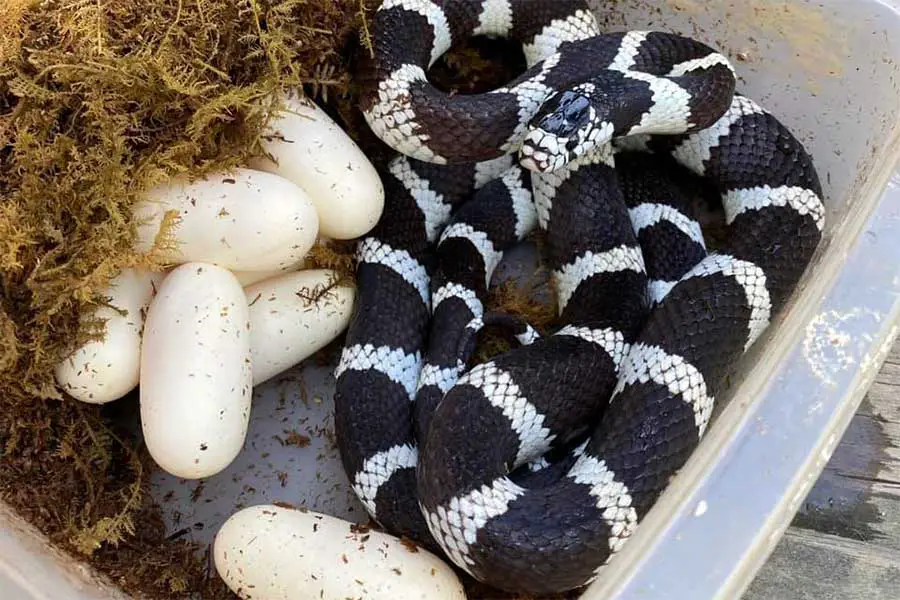
Snakes can either produce eggs or give birth to live young.

Pythons and many colubrids snakes lay eggs, including rat snakes. Boas, rattlesnakes, and sea snakes incubate their young inside the mother and then birth the young baby snakes.
Most species of snake do not take care of their offspring after they are born.
Males typically have nothing to do with producing young snakes after mating.
Some snakes have some form of parental care with their baby snakes. This is most common with snakes that give live birth. Some rattlesnakes may protect their young for a few hours after birth.
Many pythons practice maternal care. The female will incubate her eggs by wrapping around them. In some species, the mother will bask and then wrap around her snake eggs to warm them.
In other snakes like reticulated pythons, the female will shiver to raise the temperature of her eggs. Pythons on a clutch of eggs will typically defend the eggs.
We hope this has helped teach you about snakes and how they reproduce. If you are curious about a specific species, you can ask here.
There has been little official research on how snakes reproduce.
Much information online about snake reproduction comes from breeders and researchers who breed snakes in captivity.
Hopefully, in the future, more research will be done, but this article should give you a good idea about how snakes mate, wether you have a pet snake or are interested in wild ones.
If you have any other questions or comments, please leave them below.
